Terrarium moss is a fantastic addition to any properly maintained enclosure.
Not only does it add an attractive element of greenery to your space, but it also helps maintain humidity and absorb toxins to keep your terrarium inhabitants healthy.
From short clumpy moss to far-reaching carpeting moss, there are several varieties of terrarium moss to choose from.
Each different variety comes with its own set of benefits.
With the right supplies and instructions, you can easily create a lush green environment for your terrarium critters that will provide a safe, healthy, and welcoming environment for them.
By the end of this article, you will have all the information you need to make an informed decision about which type of moss is right for your terrarium and how to ensure it thrives.
What Is Terrarium Moss?
Terrarium moss is a type of moss that is used to decorate and liven up terrariums.
It comes in a variety of species that make up a unique array of shapes, colors, & sizes.
Making it an easy choice for most miniature ecosystems.
This version of vivarium moss provides essential coverage to the soil and helps retain moisture while adding a natural, aesthetic look to the terrarium.
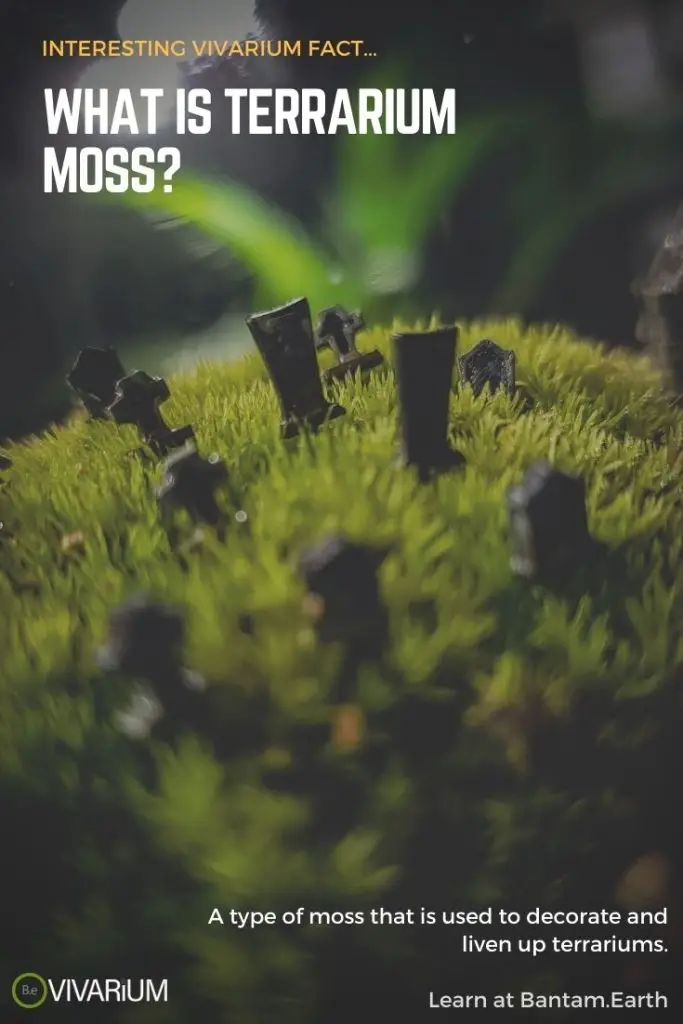

Why Should I Use It?
In addition to its aesthetic benefits, terrarium moss is also extremely low-maintenance.
It doesn’t need a lot of water, light, or fertilizer to survive, meaning it will remain healthy and look vibrant for a long time.
This makes it ideal for many types of terrariums since it requires less care and attention than other plants or animals.
Finally, terrarium moss can also act as a natural filter for terrarium ecosystems since it helps prevent bacteria and other microorganisms from infiltrating the environment.
This is important for creating healthy, balanced terrariums that have a well-regulated ecosystem.
The Best Moss For Terrariums
The best types of moss commonly used in terrariums are typically mosses that do well in highly humid environments.
These plants usually have a fast growth rate, are low-maintenance, and can be used to create a natural-looking environment.
Many of the mosses on our list of top picks produce a thick, almost “carpet-like” vine and are able to hold moisture well.
Just keep in mind, when planting these mosses, they must be kept moist and in indirect light to thrive. Here is a list of the best mosses for terrariums:
Tree Moss (Climacium dendroides)
Tree moss is an excellent choice for terrarium moss due to its dense, green foliage.
It has finely-textured foliage that is easy to shape, making it ideal for creating more intricate shapes and designs within terrariums.


Mood Moss (Dicranum scoparium)
Mood Moss is a tropical terrarium moss that boasts vibrant green foliage and textures.
It grows in large, feathery clumps, so it can be used to fill any larger gaps or bare spots within terrariums.
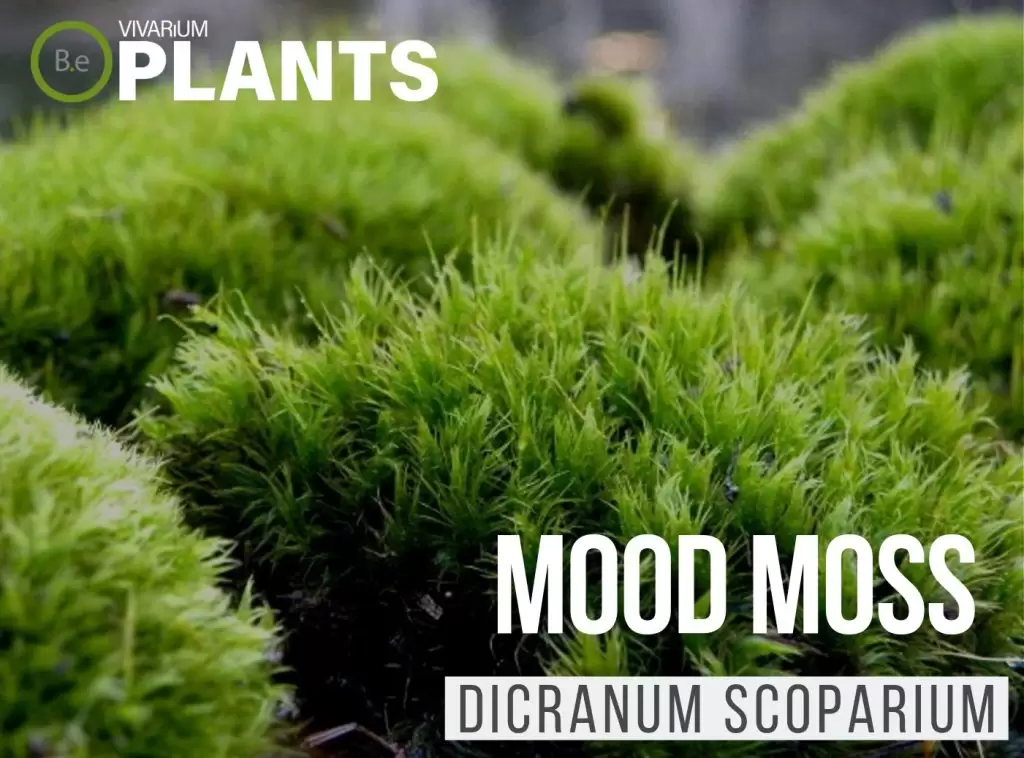

Peat Moss (Sphagnum moss)
Peat moss is well-known for its highly absorbent capabilities and texture and makes an excellent terrarium moss.
It grows in flat, small patches and does not require much light, making it perfect for medium to low-light terrariums.


Feather Moss (Ptilium crista-castrensis)
Feather moss is a low-lying terrarium moss that is perfect for ground cover.
It grows in thin, feathery clumps and provides essential foliage coverage while also creating a lush aesthetic.
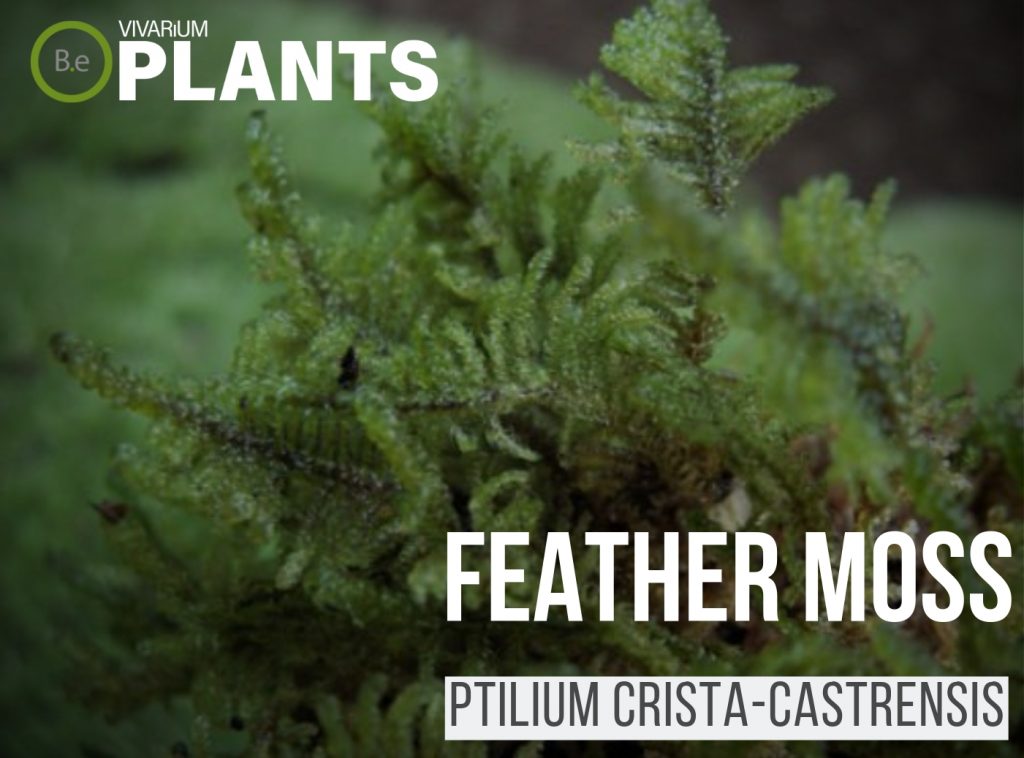

Club Moss (Selaginella kraussiana)
Club Moss is one of the most popular selections when it comes to terrarium moss.
Its bright green foliage and fast growth rate make it an excellent choice for any type of terrarium.


Star Moss (Tortula ruralis)
Star Moss is an eye-catching terrarium moss due to its unique star-shaped foliage.
It has a soft, spongy texture and is resistant to pests and damage.


Delicate Fern Moss (Thuidium delicatulum)
Fern moss is an evergreen terrarium moss that boasts deep green foliage and yellow veins.
This type of moss prefers humid and shaded terrariums, making it perfect for natural terrariums.
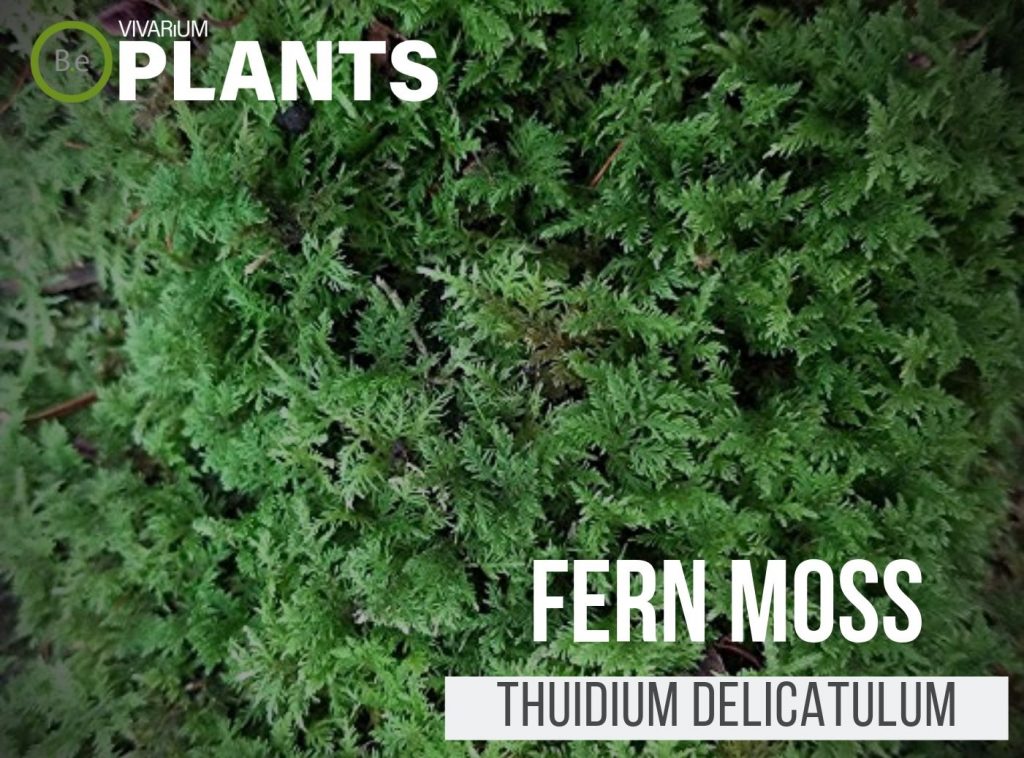

Sheet Moss (Hypnum cupresiforme)
Sheet Moss is a type of terrarium moss that is light green in color and grows in thin, flat sheets.
It is great for creating dense ground cover and does not require much light to stay healthy.
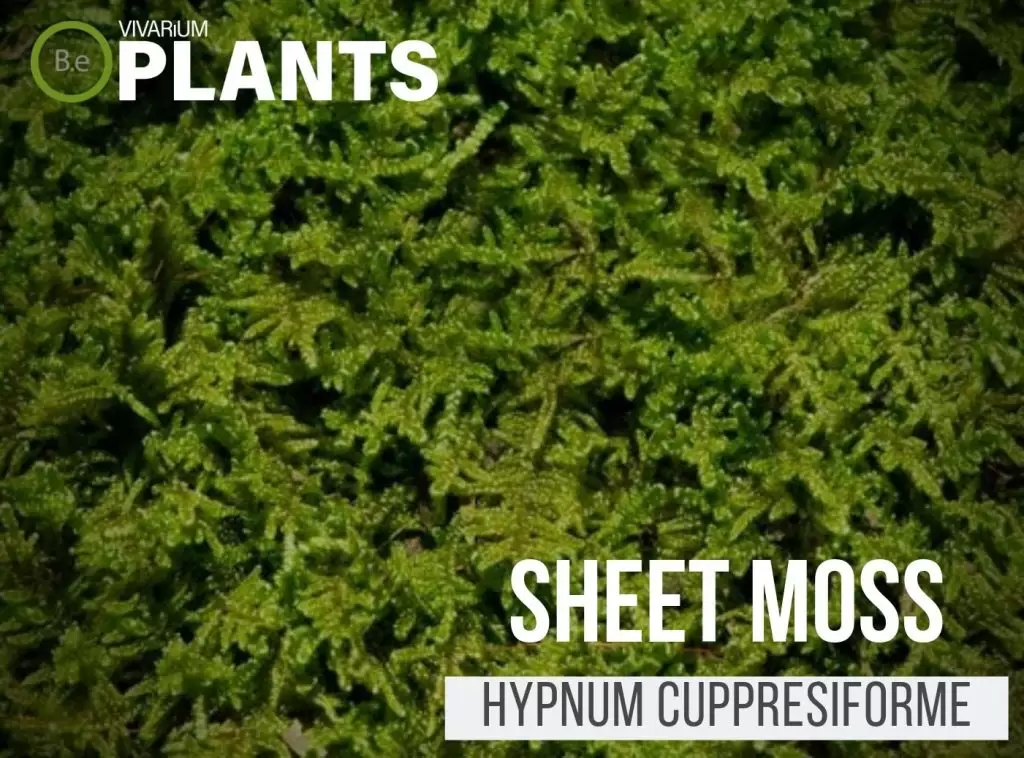

How To Grow Moss In A Terrarium
Growing moss in a terrarium is not only rewarding but also extremely easy!
Whether you want a vibrant accent to your terrarium or some moody ground cover, moss is the perfect addition.
This next section will illustrate just how minimal effort is required to keep the moss alive.
We will start with what you’ll need to grow moss as well as a brief step-by-step guide to get you right into the mix of things.
Supplies Needed To Be Successful
When planting terrarium moss, there are a few essential supplies you will need.
It is important to ensure that you get the right moss and other supplies in order to give your terrarium a healthy start.
First, you need to find a suitable type of terrarium moss.
We’ve already provided a curated list of the best types, so start with picking one or two that you’re interested in and use those guides to tailor your build.
Each type of moss has slightly different instructions for growing in terrariums, so use those guides to determine which type is best for your terrarium.
Before planting, it is also important to gather the necessary supplies such as substrates and tools.
You will also need glassware for growing the terrarium moss.
These are the style jars we use in all of our terrarium projects in the tutorial section of the site.
Lastly, you may want to buy accessories to decorate your terrariums, such as hardscapes or decor.
With these supplies in hand, you can start planning and growing your very own terrarium moss.
A Quick Guide To Growing A Mini Moss Ecosystem
- Step 1: Acquire Terrarium Moss: You can obtain terrarium moss either through a local nursery or online. If purchasing online, look for moss that is labeled terrarium friendly.
- Step 2: Supplies: You will need a terrarium with a lid to protect the moss from direct sunlight, a spray bottle to mist the moss every few days, gardening shears to trim the moss if needed, and a shallow tray for the terrarium to sit in.
- Step 3: Planting Instructions: Start by adding a layer of small stones or gravel to the bottom of the terrarium. This will help to provide adequate drainage for the moss. Then, spread your terrarium moss slowly over the stones in an even layer. You can use your hands or the shears to carefully shape the moss.
- Step 4: Caring for the Terrarium Moss: To help keep your terrarium moss thriving, you will need to mist it with water every few days. You can also place the terrarium in a spot where it will receive indirect sunlight. If the moss starts to look dry or begins to yellow, mist it more often. Do not fertilize the moss, as it will not respond well.
- Step 5: Enjoy: Once you have planted and cared for the terrarium moss, sit back and enjoy! The moss will soon fill out and provide you with an amazing display in your terrarium.
Collecting Moss From The Wild
If you don’t wish to purchase your moss, there are other methods to acquire it.
One way to get free moss is to collect it from natural habitats such as logs, rocks, and tree branches.
Select moss that is relatively close to the ground and then give it several soaks in cold water.
This will help to remove any dirt and unwanted pests.
After soaking and rinsing the moss, spread it out on a newspaper and let it dry for a few hours.
Once the moss has dried, you can now start planting it and adding it to your terrarium.
Propagating Moss For Terrarium Use
One of the easiest and most common ways to propagate moss is by division.
Simply take apart the clumps of moss and plant the separate parts in the soil.
Over time, the separate parts will become separate colonies and continue to grow.
Another way to propagate moss is with plantlets. Plantlets are little clusters of moss at the end of runners.
Some moss will produce these plantlets on its own, but in cases when it does not, you can gently separate the clusters from the runners and replant them.
Finally, you can create a moss slurry with buttermilk or yogurt.
Simply blend up buttermilk or yogurt with living moss and spread the mixture over your soil.
The mixture will eventually begin to grow roots.
Propagating moss for terrarium use is a great way to fill empty spots within your terrarium.
If you properly utilize the simple steps above, you can have a lush terrarium filled with moss in no time.
Caring For The Moss In A Terrarium
Caring for terrarium moss is quite simple, but there are a few important elements to keep in mind for a healthy and thriving terrarium.
Prior to planting, you’ll need to make sure you have the proper supplies, such as moss and soil, as well as drainage gravel to ensure good drainage.
Once you have all the necessary supplies, you can start planting your terrarium moss.


When it comes to caring for terrarium moss, you’ll need to provide the right amount of humidity and lighting.
The moss should only be lightly misted once every few days with clean, filtered water if the terrarium has issues maintaining humidity.


It also does not require direct sunlight, so you can place the terrarium moss in a shaded area and still keep it healthy.
Finally, terrarium moss may not require fertilizing, but this step can help promote growth and ensure that the moss lasts for longer periods of time.
In Summary
In conclusion, terrarium moss has many benefits.
Not only is it aesthetically pleasing, but it’s also low-maintenance, easy to find, and great for air circulation.
When planting and caring for terrarium moss, make sure to follow the instructions carefully to reap the best benefits.
With the right care, your terrarium moss will thrive and be a beautiful and lasting part of your terrarium décor.
Frequently Asked Questions
The best kinds of moss for your terrarium will depend on the type of atmosphere you would like to create and what environment you plan to create for your plants. Some of the best kinds of moss for terrariums are:
• Java Moss – known for its low maintenance and hardiness, making it the ideal choice for beginner terrariums.
• Fissidens Fontanus – a vibrant green, soft texture moss with a delicate web-like formation, suitable for terrariums with a bit more maintenance.
• Sphagnum Moss – a common choice for terrariums, known for its high moisture levels and ability to provide a humid environment.
• Thuidium Delicatulum – a lower-growing moss that looks great in any terrarium, thanks to its fine fronds and light green color.
• Aegagropila Linnaei – a fluffy, feathery moss that forms a carpet in terrariums and works perfectly as a centerpiece.
Yes. Moss is an excellent addition to terrariums, providing necessary nutrients to the environment while looking great with its lush and vibrant green color. Moss can provide a softer substrate than soil or gravel, give an overall more natural feeling to the terrarium, and even eat up some of the moisture in the air, helping to create a more ideal environment for other plants.
To keep moss alive in a terrarium, the terrarium should receive plenty of indirect light, it should be misted regularly with a fine mist of water, and the temperature should be maintained between 55–75 degrees Fahrenheit. It also helps to fertilize the moss with a liquid fertilizer once a month. Additionally, moss should be trimmed as needed to keep it looking healthy and full.
Types of moss that work best for closed terrariums include:
- Java Moss: an ideal low-maintenance moss that provides plenty of texture and colors ranging from bright green to darker shades of moss
- Spiky Moss: great for adding texture to terrariums and adding a slight elevation to the setup
-Hypnum Moss: this variety of moss can help prevent algae growth and provides a unique look with its curved and twisted fronds - Reindeer Moss: this variety of moss features a bright green color that can add a pop to your terrarium setup
- Fairy Moss: this delicate moss works great for shaded terrariums and can create a beautiful natural atmosphere.
Moss in a terrarium can last indefinitely if it is maintained with ample moisture and indirect light. Moss is an incredibly hardy plant and can survive for years in the right conditions.
Yes, charcoal is a crucial component of building a moss terrarium. Charcoal helps keep the terrarium environment healthy by purifying the air and absorbing Any unwanted odors, as well as filtering out any contaminants from the water. Charcoal can be found at most pet stores, nurseries, and garden centers.
Water moss in a terrarium at least every 2–3 days. For best results, use a mister or a spray bottle with distilled or filtered water. Check for moisture each day to determine how often you should water.
